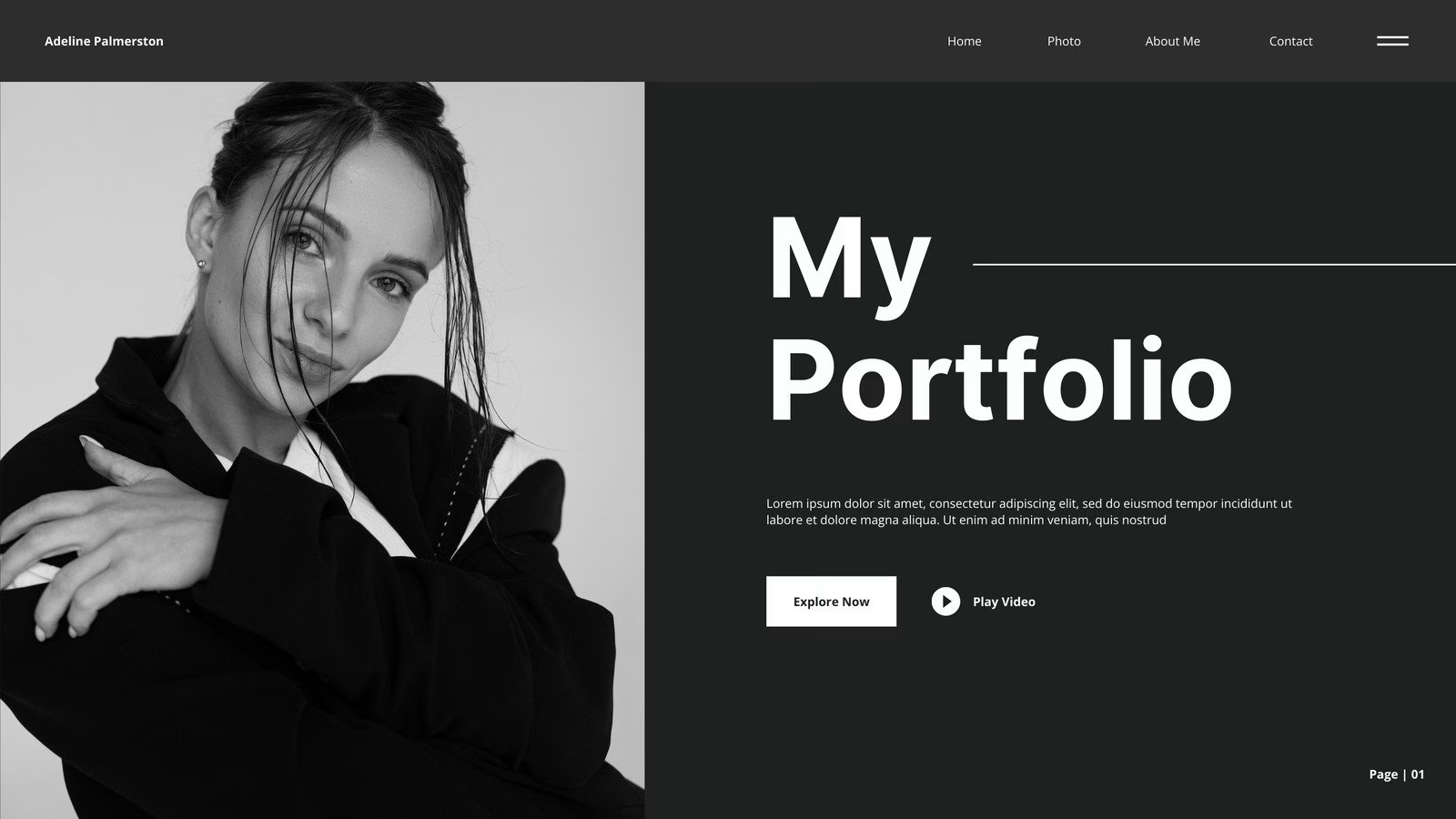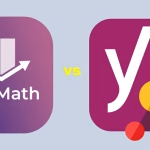Have you ever felt like setting your rates as a content creator is a high-stakes guessing game? Charge too much, and clients might run for the hills. Charge too little, and you’re left feeling undervalued and overworked. The truth is, pricing your services doesn’t have to be a minefield. With the right content creator pricing guide, you can confidently find that sweet spot—where your skills are valued, your clients are happy, and your creativity thrives.
It all starts with knowing your worth, understanding the market, and embracing the art of pricing with purpose.
In this guide, we’ll break down everything you need to know about what to charge as a content creator. From understanding your worth to exploring different pricing models, this comprehensive resource will help you set rates that reflect your expertise and attract the right clients.
Understanding Your Value as a Content Creator
Before diving into numbers, it’s essential to understand your value. Content creation is more than just writing a blog post or designing a logo—it’s about storytelling, strategy, and delivering results.

Here’s how to assess your worth:
1. Evaluate Your Skills and Expertise
- Are you a beginner, intermediate, or expert in your niche?
- Do you have specialized SEO, video editing, or graphic design skills?
- Have you worked with high-profile clients or achieved measurable results (e.g., increased engagement, traffic, or sales)?
2. Consider Your Niche
- Some niches, like tech or finance, command higher rates due to their complexity and demand.
- Lifestyle or travel content might have more competition, which can affect pricing.
3. Factor in Your Time and Effort
- How long does it take you to complete a project?
- Are you providing additional services like strategy, revisions, or analytics?
4. Know Your Audience
- Are you targeting small businesses, mid-sized companies, or large corporations?
- Different clients have different budgets and expectations.
Explore Best Motivation Tips for Content Creators to Stay Focused in 2025
Common Pricing Models for Content Creators
There’s no one-size-fits-all approach to pricing. Here are the most common models content creators use:
1. Hourly Rate
- How It Works: Charge a set fee for each hour you work.
- Pros: Simple to calculate; ideal for small or unpredictable projects.
- Cons: You can limit earning potential if you work efficiently.
- Example Rates:
- Beginners: 25-50/hour
- Intermediate: 50-100/hour
- Experts: 100-300+/hour
2. Per-Project Rate
- How It Works: Charge a flat fee for the entire project.
- Pros: Encourages efficiency; clients appreciate knowing the total cost upfront.
- Cons: Requires accurate scope definition to avoid scope creep.
- Example Rates:
- Blog post: 100–500
- Social media campaign: 500–5,000
- Video production: 1,000–10,000+
3. Retainer Model
- How It Works: Charge a monthly fee for a set number of deliverables or hours.
- Pros: Provides steady income; builds long-term client relationships.
- Cons: Requires consistent workload and commitment.
- Example Rates:
- Social media management: 1,000–5,000/month
- Content strategy: 2,000–10,000/month
4. Value-Based Pricing
- How It Works: Charge based on the value you provide to the client (e.g., increased revenue or brand visibility).
- Pros: Aligns your earnings with client success; can lead to higher rates.
- Cons: Harder to quantify; requires trust and transparency.
- Example Rates:
- Percentage of revenue generated: 5–20%
- Flat fee for high-impact projects: 5,000–50,000+
Explore Best Motivation Tips for Content Creators to Stay Focused in 2025
Factors That Influence Your Rates as a Content Creator
Setting the right rates as a content creator can feel tricky, but understanding the key factors that influence your pricing will help you charge what you’re worth. Here’s a breakdown of what to consider:
1. Experience and Portfolio
Your expertise plays a huge role in determining your rates.

Beginners: If you’re just starting, you may need to charge lower rates to attract clients and build a portfolio.
Experienced Creators: Those with an established track record and strong portfolio can command premium prices.
Specialized Skills: If you offer niche expertise (e.g., technical writing, SEO optimization, or video scripting), you can justify higher rates.
2. Scope of Work
Not all content projects are created equal.

Simple Assignments: A single blog post or social media caption will be priced differently than a full content marketing strategy.
Multiple Deliverables: Projects requiring extensive research, SEO, multimedia, or ongoing content calendars will demand higher fees.
Revisions and Edits: Consider whether you include unlimited revisions or charge extra for additional work.
3. Client Budget
Every client has a different budget, and understanding their financial capacity can help you negotiate effectively.

Small Businesses & Startups May have limited budgets and look for cost-effective solutions.
Mid-Sized Businesses: These can offer competitive rates but may require more structured contracts.
Enterprise Clients & Corporations: Have larger budgets and are willing to pay top dollar for high-quality, strategic content.
Pro Tip: Be flexible, but never undervalue your work. Offer tiered pricing packages to cater to different client types.
4. Industry Standards
Understanding what others in your niche charge will help you set realistic expectations.

- Use platforms like Glassdoor, Payscale, and industry-specific forums to gauge average rates.
- Check freelancer platforms like Upwork and Fiverr to see what competitors are offering.
- Network with fellow content creators to exchange insights on pricing trends.
5. Geographic Location
Your location (or your client’s location) impacts pricing.

High-Cost Regions (U.S., Canada, Western Europe): Typically, content creators in these areas charge higher rates due to the cost of living.
Lower-Cost Regions (Southeast Asia, Africa, Eastern Europe): Rates tend to be lower, but skilled creators can still demand competitive fees.
Remote Work Advantage: If you’re working with international clients, consider adjusting your rates based on their local market.
6. Urgency and Turnaround Time
Tight deadlines and last-minute projects often justify premium pricing.
Standard Turnaround: Projects with flexible timelines follow your regular rates.
Rush Jobs: If a client needs content delivered in 24-48 hours, apply a rush fee (typically 25%-50% higher than your standard rate).
Ongoing vs. One-Time Work: Clients seeking long-term collaborations may receive discounts compared to one-off urgent requests.
Setting your rates as a content creator involves balancing your skills, market demand, and client expectations. Regularly reassess your pricing based on your growing experience and industry trends. Remember, you’re not just charging for words—you’re offering expertise, creativity, and value.
By understanding these factors, you’ll be in a stronger position to confidently set and negotiate your rates while ensuring you’re fairly compensated for your work.
Explore Best Motivation Tips for Content Creators to Stay Focused in 2025
How to Research Market Rates
Setting the right price for your work can feel like a guessing game, but it doesn’t have to be. Researching market rates is key to ensuring you’re competitive without underselling yourself.

Here’s a step-by-step guide to finding and setting the best rates with confidence in your industry:
1. Check What Other Creators Are Charging
One of the fastest ways to gauge pricing is by connecting with fellow freelancers and content creators. Join online communities such as:
- Reddit (subreddits like r/freelance, r/WorkOnline)
- Facebook Groups (search for freelancer or industry-specific groups)
- LinkedIn Forums (network with professionals in your niche)
Engage in discussions, ask about pricing trends, and learn from those who have been in your shoes.
2. Analyze Freelance Job Boards
Freelance marketplaces can give you a realistic view of what clients are currently paying. Check platforms like:
- Fiverr – See how creators package their services and what pricing tiers they offer.
- Upwork – Browse freelancer profiles and job postings to see common rates.
- ProBlogger – A go-to job board for content writers with listed pay rates.
Look at multiple listings to identify trends, keeping in mind that experience level and niche affect pricing.
3. Review Industry Reports & Surveys
Data-backed reports help you make informed decisions based on actual market research. Organizations like:
Regularly publish surveys and reports on freelancer earnings, hourly rates, and content marketing trends. These insights help you benchmark your pricing within industry standards.
4. Ask Potential Clients Directly
One of the most overlooked yet effective strategies is simply asking clients about their budgets. During consultations, try questions like:
- “What budget range are you working with for this project?”
- “Have you hired freelancers before? If so, what rates have you paid in the past?”
This not only helps you gauge the market but also gives you negotiation leverage.
Pro Tip: Pricing isn’t static—keep refining your rates based on demand, experience, and client feedback. Start with research, test different price points, and don’t be afraid to charge what you’re worth!
Tips for Negotiating Your Rates (Without Feeling Awkward!)
Negotiating your rates can feel nerve-wracking, especially if you’re worried about losing a potential client. But here’s the truth: confident negotiation isn’t about being pushy—it’s about knowing your worth and communicating it effectively. Whether you’re a freelancer, content creator, or service provider, mastering this skill can help you earn what you deserve.
Here’s how to negotiate your rates like a pro:
1. Know Your Minimum Rate (and Stick to It!)
Before entering any negotiation, you should define your baseline rate—the absolute minimum you’re willing to accept. To calculate this, consider:
- Your Expenses – Business costs, software subscriptions, taxes, and other overhead expenses.
- Your Ideal Income – How much you need to earn annually or monthly to reach your financial goals.
- Time Investment – The hours required for each project, including revisions, communication, and research.
This helps you avoid lowball offers and ensures you’re not working for less than your worth.
2. Highlight Your Value (Not Just Your Price)
Many clients focus on cost, but what they care about is value—how your work benefits them. Instead of just quoting a price, emphasize:
- Your experience and expertise (e.g., years in the industry, specialized skills).
- Past results (e.g., “My blog post increased organic traffic by 40%”).
- Unique advantages you bring (e.g., SEO knowledge, conversion-focused writing, fast turnaround).
Example:
Instead of saying: “I charge $200 per blog post.”
Try: “For $200, I deliver a well-researched, SEO-optimized article that helps boost your search rankings and engagement.”
3. Be Transparent About Your Pricing
Clients appreciate the clarity. Clearly outline:
- What’s included – Number of revisions, word count, turnaround time, additional services.
- Any extras – Will additional revisions cost more? Is rush delivery an option?
- Payment terms – Upfront deposits, milestone payments, or full payment upon completion.
Transparency eliminates confusion and prevents last-minute price haggling.
4. Offer Flexible Packages
Instead of a flat rate, provide tiered pricing to accommodate different budgets:
✅ Basic: Entry-level service with fewer features.
💡 Standard: A well-rounded option covering most client needs.
✨ Premium: A high-value, all-inclusive package with extra perks.
Example:
- $150 – Basic blog post (800 words, no images, 1 revision)
- $250 – Standard post (1,200 words, SEO-optimized, 2 revisions, images included)
- $400 – Premium post (1,500+ words, deep research, 3 revisions, internal linking, keyword strategy)
This gives clients choices while keeping your value clear.
5. Stand Firm (It’s Okay to Walk Away!)
Not every client will be the right fit, and that’s okay! If a potential client pressures you to lower your rate beyond your baseline, politely decline.
🔹 What to say if a client lowballs you:
“I appreciate your interest, but my rates reflect the quality and effort I put into my work. If your budget changes in the future, I’d love to revisit this conversation!”
Remember, clients who value your work will pay your worth. Don’t settle for less just to land a gig—it’s better to focus on clients who respect your expertise.
Some Thoughts: Negotiating rates isn’t about convincing someone to overpay—it’s about demonstrating your value and ensuring fair compensation. The more you practice, the easier it becomes. Know your worth, stand by it, and watch your business grow!
Explore Best Motivation Tips for Content Creators to Stay Focused in 2025
Common Mistakes to Avoid When Setting Your Rates
Pricing your services as a freelancer or content creator can be tricky. Set your rates too high, and you might struggle to attract clients. Set them too low, and you risk overworking yourself for little reward. To find the right balance, avoid these common pricing mistakes:
1. Undervaluing Your Work
One of the biggest mistakes freelancers make is charging too little—often out of fear of losing clients. But here’s the problem:
- Low rates attract clients who prioritize cheap work over quality.
- You’ll need to take on more projects just to make ends meet.
- Burnout becomes inevitable when you’re overworked and underpaid.
How to Fix It:
- Research industry rates to ensure you’re charging fairly.
- Shift your mindset: You’re not just selling time—you’re selling expertise, creativity, and results.
- If you’re consistently booked at your current rate, it’s time to raise your prices.
2. Not Accounting for Expenses
Many freelancers only consider their hourly time when pricing services, but your costs matter too.
Some common expenses include:
- Software and tools (e.g., Canva, Adobe, SEO tools)
- Website and domain fees
- Taxes and transaction fees
- Equipment (laptop, camera, microphone, etc.)
- Marketing and advertising
How to Fix It:
- Add up all your business expenses and factor them into your pricing.
- Set aside a portion of your earnings for taxes and unexpected costs.
- If your costs increase, your rates should, too.
3. Failing to Adjust Rates as You Grow
Your skills, experience, and expertise increase over time—so your rates should, too. If you’ve been charging the same prices for years, you’re probably leaving money on the table.
Signs it’s time for a rate increase:
- You’ve gained more experience, certifications, or expertise.
- You have a steady stream of clients with little pushback on pricing.
- You’re overbooked and struggling to keep up with demand.
How to Fix It:
- Review your rates every six to twelve months and adjust based on industry trends.
- Inform existing clients of increases with advanced notice and justification.
- Gradually increase rates instead of making drastic jumps.
4. Ignoring Client Feedback
Your clients’ feedback can help you refine your pricing strategy. Are they consistently saying your work is underpriced? Are they requesting additional services that you could bundle?
How to Fix It:
- Pay attention to what clients value most about your work.
- If they often say, “I wasn’t expecting this much value,” you might be undercharging.
- Use feedback to create premium packages that better serve their needs.
Your Pricing Reflects Your Value: Setting the right rates isn’t just about numbers—it’s about recognizing your worth and charging accordingly. Avoid these mistakes, stay confident in your pricing, and watch your freelance business thrive.
Final Thoughts
Setting your rates as a content creator is both an art and a science. It requires a deep understanding of your value, market trends, and client expectations. By following this guide, you’ll be equipped to price your services confidently and build a sustainable, rewarding career.
Remember, your work has value—don’t be afraid to charge what you’re worth.
FAQs
1. How do I determine my hourly rate as a content creator?
To calculate your hourly rate, follow these steps:
- Decide on your desired annual income based on your financial goals.
- Estimate the number of billable hours you plan to work per year (excluding time spent on admin, marketing, and unpaid tasks).
- Factor in business expenses, software costs, and taxes to ensure profitability.
- Use this formula:(Annual Income + Expenses + Taxes) ÷ Billable Hours = Hourly Rate
For example, if you want to earn $60,000 per year, have $10,000 in expenses, and plan to work 1,000 billable hours, your hourly rate should be:
($60,000 + $10,000) ÷ 1,000 = $70 per hour
2. What’s the difference between hourly and project-based pricing?
- Hourly pricing: You charge for the actual time spent on a project. Ideal for tasks with unpredictable scopes or ongoing work.
- Project-based pricing: You set a flat fee based on the project’s complexity and value, rather than time spent. Best for well-defined projects like blog posts, website copy, or video scripts.
3. How do I know if my rates are too high or too low?
To gauge whether your pricing is competitive:
- Research industry benchmarks on platforms like Upwork, Fiverr, or Glassdoor.
- Check competitor pricing in your niche.
- Ask for client feedback—if clients accept your rates too quickly, you may be undercharging.
- Assess demand—if you’re overbooked, it might be time to increase your rates.
4. Should I charge more for rush projects?
Yes, rush projects typically require you to work under tight deadlines, prioritize the client’s needs over others, and sometimes work extra hours. It’s standard to add a rush fee of 20% to 50% depending on the urgency.
5. How can I justify higher rates to clients?
If clients question your rates, emphasize:
- Your expertise and experience (e.g., years in the industry, certifications, past clients).
- Your proven results (e.g., traffic growth, engagement boosts, or conversion rates).
- The value you provide beyond the content itself, such as strategy, SEO optimization, and audience targeting.
- Comparisons to industry averages to show that your pricing is competitive.
6. What’s the best pricing model for beginners?
If you’re new to freelancing, consider:
- Hourly pricing for flexibility and to ensure you’re paid for all work done.
- Per-project pricing for well-defined deliverables like blog posts, website content, or social media packages.
- Package pricing (bundled services) to provide clients with multiple options and increase earnings.
7. How do I handle clients with limited budgets?
If a client can’t afford your full rate:
- Offer scaled-down services (e.g., fewer revisions, shorter content).
- Suggest a longer timeline so they can budget accordingly.
- Provide a payment plan for higher-priced services.
- Politely decline if the budget is too low for your minimum rate.
8. Should I charge differently for different types of content?
Yes, pricing should reflect the complexity, effort, and expertise required.
- Long-form blog posts, whitepapers, and video scripts tend to cost more due to research and writing depth.
- Social media posts or short blog entries are generally lower-priced but may require high volume.
- SEO-optimized content, technical writing, or video production typically command premium rates.
9. How often should I raise my rates?
Review and adjust your rates:
- Annually to reflect inflation and skill growth.
- When demand increases, and you have more clients than you can handle.
- After gaining certifications or experience that add value to your services.
- When industry rates rise, ensuring you stay competitive.
10. What if a client refuses to pay my rates?
If a client pushes back on pricing:
- Explain your value and why your rates are justified.
- Negotiate strategically, offering adjusted deliverables instead of lowering your rate.
- Stand firm—if they can’t afford you, they may not be the right fit.
- Move on and focus on finding clients who appreciate and respect your work.
Explore Best Motivation Tips for Content Creators to Stay Focused in 2025








